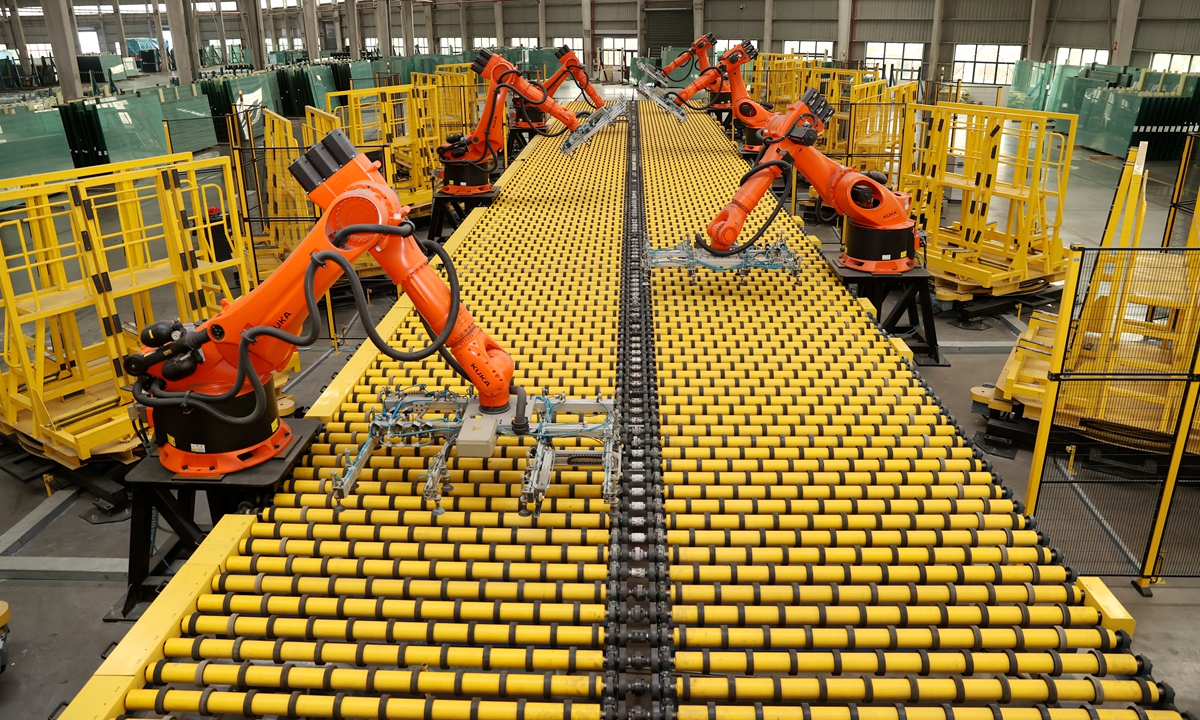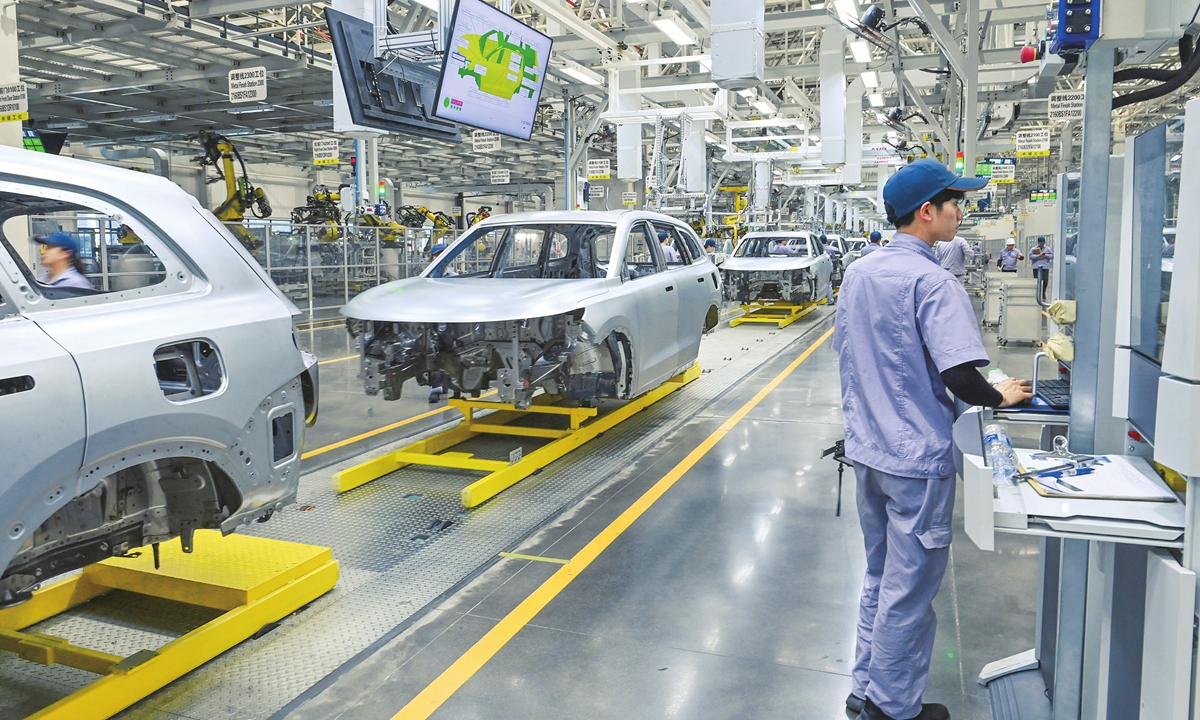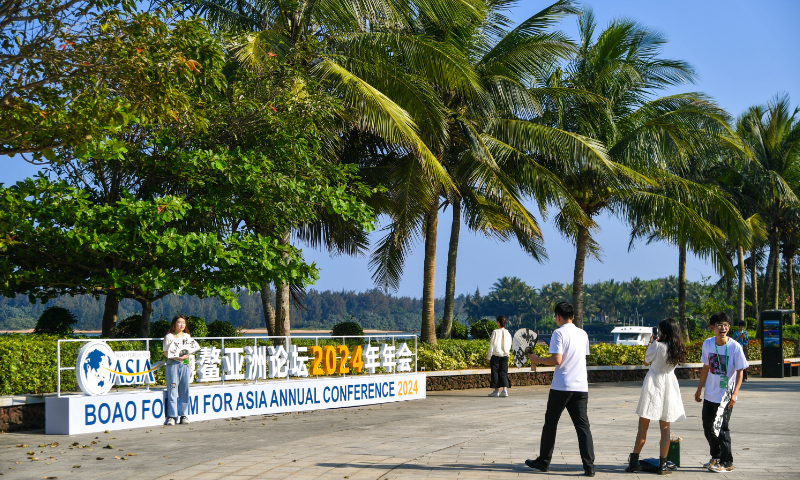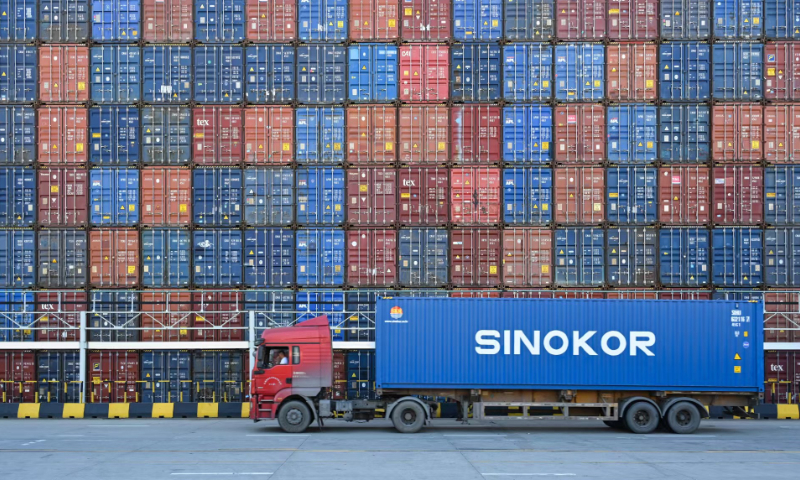
A robotic arm picking system operates in an orderly manner at a local factory in Suqian, East China's Jiangsu Province, on January 17, 2024. As the year begins, major enterprises in the city are working at full capacity to meet orders, achieving a good start to the year. Photo: VCG
The Service Survey Center with the National Bureau of Statistics and China Federation of Logistics and Purchasing released March's data on Sunday, namely the purchasing managers' index (PMI) for China's manufacturing sector, the PMI of non-manufacturing activity and the comprehensive PMI output index, which stood at 50.8 percent, 53.0 percent and 52.7 percent, with each up 1.7, 1.6 and 1.8 percentage points respectively. These three major indexes are in the expansion range. The manufacturing PMI returned to the expansion zone for the first time since September, and the PMI of non-manufacturing activity rose for the fourth consecutive month, the highest since July. All three indexes were higher than market expectations, conveying the warmth of China's economy like spring breeze.PMI is generally regarded as one of the most important indicators reflecting the operation of an economy, especially the economic health, and has received much attention from the industry. A few months ago, when China's manufacturing PMI was below 50, a reading that reflects a contraction, those who talk down the Chinese economy outside China made all efforts to give this phenomenon a special significance, making it almost "conclusive proof" of China's economic recession or even the collapse. Objectively speaking, the confidence of some people in China was more or less influenced by those pessimistic opinions, with some Chinese people beginning to worry too much after seeing a not-so-high PMI number.
Interestingly, now that the manufacturing PMI has come back to the expansion zone, the pessimists have either remained silent or claimed that this is temporary and we need to observe whether it is sustainable. The official PMI data are all released by the Chinese authorities, and those interpreting it remain the same group. When the number is not looking good, this group of people interprets it as "reflecting the real if not 'worse' state of China's economy." And when the number is promising, this group thinks it does not reflect the real state of China's economy. As we can see, those who talk down the Chinese economy make their arguments on the basis of a pre-determined conclusion. The good news is that China's economy, as Chinese President Xi Jinping said a few days ago in a meeting with representatives of the US business, strategic and academic communities, did not collapse as predicted by the "China collapse theory," nor will it peak as forecasted by the "China peak theory."
In fact, the curved line drawn by the manufacturing PMI in the past year is a true reflection of the process of China's real economy experiencing and overcoming difficulties. The manufacturing PMI fell below the boom-bust line, which was the period when China's manufacturing industry was under the greatest pressure. However, this was temporary, and its return to the expansion range was inevitable. Before the release of PMI data, many statistical indicators such as import and export data, power generation data, the volume of passenger and freight transportation, consumption data during the Spring Festival, and so on, have clearly shown that China's economy has not only returned to the pre-pandemic level, but has also seen significant growth and improvement in trade competitiveness and the structure of durable consumer goods.
With the recent release of various economic development data for the first quarter, it is obvious that the national economy continues to turn for the better. The Central Economic Work Conference held at the end of last year pointed out that, overall, favorable conditions outweigh unfavorable factors in China's development, and the fundamental trend of the economic recovery and long-term positive outlook has not changed, urging stronger confidence. The signals of China's accelerated economic recovery, including PMI, are also a natural manifestation of the effectiveness of Chinese society's focus on economic development and hard work over a period of time. Of course, it does not happen naturally, but it is something that China's economy actively strives for and is the result of hard work from people across China.
Since the beginning of this year, a series of positive signals have been released, making the world become more hopeful about the performance of the Chinese economy in 2024. In 2024, China has successively introduced policies to promote high-level opening-up, stimulate technological innovation and improve the business environment, injecting new vitality and momentum into economic growth, and further enhancing the potential of the Chinese economy.
The structural adjustment and upgrading of the Chinese economy are achieving positive results. The transformation of traditional manufacturing to high-end manufacturing and its integration with modern service industries has improved the quality and efficiency of the economy, and enhanced confidence and resilience in the long-term healthy development of the Chinese economy.
Currently, the Chinese economy is in a critical period of consolidating its recovery and improvement, and the positive signs shown by leading indicators such as the PMI have greatly boosted confidence. In the upcoming second quarter, with further release of market demand and the continued stability of the industrial chain and supply chain, the Chinese economy will accelerate its pace of transformation and upgrading on the basis of stability. We have reason to be confident in the future of the Chinese economy and believe that it will usher in a more brilliant chapter of development.



